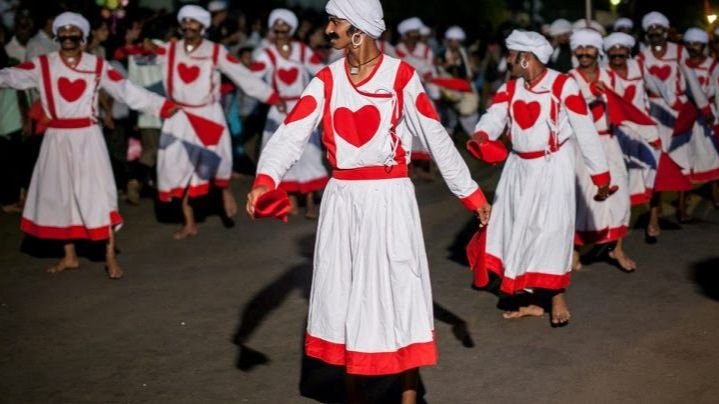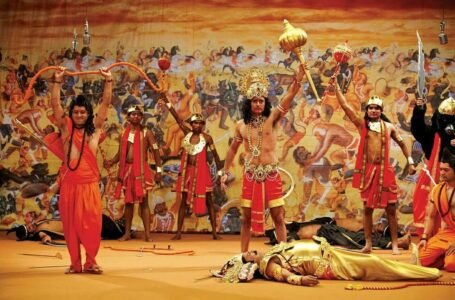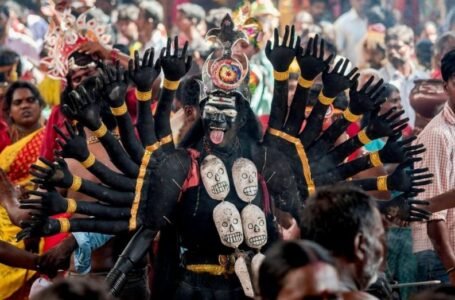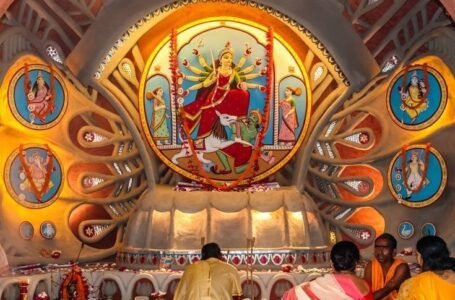The Dhangar Dance: A Celebration of Pastoral Life and Devotion

Goa, known for its picturesque beaches, vibrant culture, and diverse traditions, is not only a tourist’s paradise but also a rich repository of folk art forms. Among these, the Dhangar Dance, or Dhangari Gaja Dance, stands out as a significant cultural expression. Rooted in the traditions of the Dhangar shepherd community, this dance form reflects a blend of devotion, pastoral life, and the harmony between man and nature. Over the years, the Dhangar Dance has become a cherished part of Goa’s cultural tapestry, celebrated during festivals and religious observances.
Origins and Cultural Significance
The term “Dhangar” refers to a shepherd community traditionally engaged in pastoral activities. The Dhangars trace their ancestry back to the Saurashtra region of Gujarat and have since migrated to various parts of India, including Maharashtra, Karnataka, and Goa. In Goa, they settled in the hilly regions of the north and northwest, bringing with them a rich cultural heritage that includes the Dhangar Dance.
The dance is deeply intertwined with the worship of Bira Deva or Biruba, the community’s presiding deity. As pastoralists, the Dhangars relied heavily on their livestock for sustenance. Their deep connection with nature inspired them to compose poetry, known as Ovi, praising the beauty of their surroundings and the divine protection offered by Bira Deva.
The dance Is primarily performed during Navratri, a nine-day festival dedicated to goddess worship. On the tenth day, the community gathers to honor their deity with fervent devotion. The Dhangar Dance serves as both a religious offering and a means of communal celebration, reflecting the community’s gratitude and hope for divine blessings.
Performance and Attire
The Dhangar Dance is performed exclusively by men, who don traditional Marathi attire. Their ceremonial dress includes:
White Dhoti: A garment tied around the waist, symbolizing purity.
Kurta: A white shirt with intricate red embroidery, adding a festive touch.
Turban (Pheta): A headgear that completes the attire, often paired with colorful handkerchiefs for embellishment.
The performance begins with simple footwork to the rhythmic beats of the Dhol, a barrel-shaped drum, accompanied by the Thaang (cymbals) and the Taso (a drone instrument). As the beats intensify, the dancers move in coordinated patterns, often circling the drummers. Their movements are vigorous yet graceful, embodying the devotional zeal that defines this dance form.
Symbolism and Themes
The Dhangar Dance is not merely a display of rhythmic movements; it is a narrative art form that tells stories of valor, devotion, and community life. The singer, often a skilled storyteller, narrates tales of battles and heroic deeds while the dancers enact these stories with evocative gestures. The performance serves as a medium to preserve and pass down oral traditions, ensuring that the community’s history and values remain alive.
The dance also symbolizes the close relationship between humans and nature. As shepherds who spend much of their time in the wilderness, the Dhangars have developed a profound appreciation for the natural world. Their performances often celebrate the beauty of the landscape, the changing seasons, and the cycles of life that sustain their livelihood.
Rituals and Festivities
During Navratri, the Dhangar Dance becomes a central feature of the community’s religious observances. The head of each family fasts throughout the nine days, consuming only milk as a mark of devotion. On the tenth day, all families bring their deities to a communal gathering, where the dance is performed with great enthusiasm and reverence.
The communal aspect of the dance highlights the importance of unity and shared traditions in the Dhangar community. It is a time for families to come together, celebrate their heritage, and seek blessings for prosperity and well-being.
The Decline of Pastoral Traditions
Despite its cultural richness, the Dhangar Dance faces challenges in modern times. The traditional shepherding lifestyle, which forms the backbone of this dance form, is in decline due to urbanization, changing agricultural practices, and economic pressures. As younger generations move away from pastoral occupations in search of better opportunities, the dance is at risk of fading into obscurity.
Efforts to preserve the dance are underway, with cultural festivals and tourism initiatives playing a significant role. The government and cultural organizations have recognized the need to document and promote such folk traditions, ensuring that they remain a vibrant part of Goa’s cultural landscape.
Comparison with Other Goan Folk Dances
Goa is home to a diverse array of folk dances, each reflecting the region’s unique blend of cultures and traditions. Alongside the Dhangar Dance, other prominent dance forms include:
Fugdi Dance: A women’s dance performed during festivals, characterized by circular and serpentine formations.
Lamp Dance: A devotional dance performed with lamps, symbolizing light and spirituality.
Shigmo Dance: A spring festival dance that celebrates the agrarian lifestyle and the victory of good over evil.
While these dances vary in their themes and styles, they share a common thread of community participation and celebration of life’s joys and challenges.
The Future of the Dhangar Dance
Preserving the Dhangar Dance requires a multifaceted approach that includes:
- Cultural Documentation: Recording performances, oral traditions, and historical contexts to create a comprehensive archive.
- Community Engagement: Encouraging younger generations to learn and perform the dance through workshops and cultural programs
- Tourism Promotion: Showcasing the dance at cultural festivals and events to generate interest and appreciation among tourists.
- Educational Initiatives: Including the dance in school curricula to foster awareness and pride in local heritage.
By taking these steps, the Dhangar Dance can continue to thrive as a living tradition,
connecting past and present generations.
Conclusion
The Dhangar Dance of Goa is more than just a folk dance; it is a celebration of pastoral life, devotion, and community spirit. Rooted in the traditions of the Dhangar shepherds, it embodies the harmony between humans and nature, the resilience of rural communities, and the enduring power of cultural expression.
As Goa continues to evolve as a modern tourist destination, it is essential to preserve and promote its traditional art forms. The Dhangar Dance, with its rich history and vibrant performances, serves as a reminder of the region’s cultural diversity and the timeless stories that bind its people together. By celebrating and safeguarding this heritage, we honor not only the Dhangar community but also the enduring spirit of Goa’s cultural legacy.


